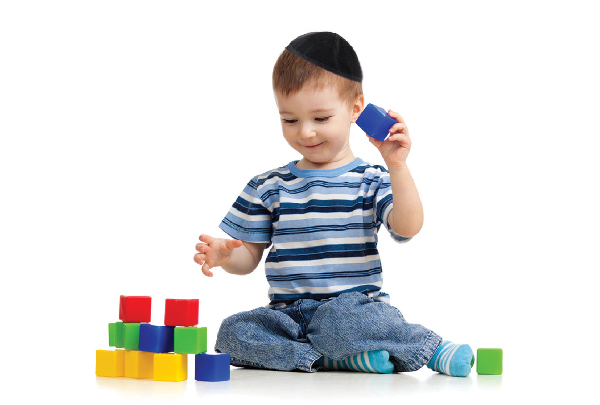
Play is the cornerstone to child development in the early years – but is one form of play better than another? There are benefits to both free play and structured play. At Hillel, both are invaluable and give opportunities for our children, regardless of age or grade, to gain important life skills. Both forms of play are valuable in their own right – the key is finding the balance that suits your child and your family.
The different types of play: free and structured.
1. Free Play: when children are left to their own devises to find something to amuse them, explore, create and/or imagine in a safe environment, undirected by adults.
2. Structured Play: when children are directed in specific activities structured by adults to develop the skills necessary for the child to be a successful later in life. PE classes are the school’s structured play. Outside of school, structured play can take many forms: karate class, football, baseball, soccer or lacrosse leagues, etc.
Structured play
In the simplest terms, structured play is showing your kids new skills to try out. It is teaching them something new that they don’t yet know how to do, and there is a huge amount of value in that on so many levels.
Scientific research has proven that structured play :
• Enhances overall development and learning capabilities
• Supports healthy brain development by providing new ideas and opportunities
• Increases physical skills and motor development
• Provides exposure to self-discipline and perseverance
• Assists in developing a positive self-image
• When performed in a group, helps build team skills, cooperation and other social skills.
Research from Yale University also shows very strong support for structured play. The found that “children who take part in organized activities benefit developmentally. They are healthier, judging from their academic performance and indicators of psychological and emotional wellbeing and self-esteem, as well as from their parent-child relationships…”
Free play
Free play is a hugely valuable activity that also must not be underestimated or neglected. Your child can learn so very much from self-directed activity. Some experts suggest that free play and “directed free play” (where an adult makes suggestions and/or participates in free play with their child) should make up the largest component of your child’s play experiences during 0-3 years. It’s valuable to your child’s overall development, it’s easy and it’s fun.
It has been suggested in the literature, that with today’s busy lifestyle, we tend to forget to let children have sufficient “down-time” in the form of free play. Often when children are not engaged in a structured activity, they are being entertained by the “box” (whether that’s the TV or the computer). In general, our society struggles to allow children to play independently and we attempt to entertain children and keep them busy to avoid boredom.
However, a little bit of boredom never hurt anyone – in fact it has been shown to be the birthplace of imagination and creativity. When leaving children to their own devices to entertain themselves, they may become bored initially…..but wait…. if you weather the few groans and moans of “I’m booorrred” (although you will rarely hear a young child say this as they instinctively know how to explore unaided), eventually your child will think of something to do. The more they practise entertaining themselves, the better they will become at it. This process fosters brain development, independence, self reliance, creativity and imagination. It is a relaxing, enjoyable and stress free activity for your children to participate in.
So which form of play is better?
Both structured and free-form play, contribute significantly — and in different ways — to your child’s development. Both are equally important and a part of your child’s daily schedule at school. They are complimentary, and each provides important aspects for your child’s needs. It is all about balancing the two forms of play in a way that suits your child and your family.
So how much of each? – Our recommendation
Both forms of play have so much to offer – it’s about striking the balance that is right for you and your child. Each family will be different when considering the optimal time recommended spent teaching new skills to your child each week. As a starting point for 0-3 year olds perhaps put aside 15-30 minutes a couple of times a week to try something new with your child and see how that goes. If both you and your child are enjoying the experience you can increase how much you do accordingly.
If your child is unfamiliar with structured activity, you may find he has a very short attention span to begin with. As your child becomes more familiar with the learning process, you will notice his attention span increase and you will both find the sessions more rewarding as he learns to concentrate for longer.
Outside of school, it’s important to take note of the numerous recommendations by top child development programs and institutes. For example, the National Association for Sport and Physical Education offers these recommendations for DAILY physical activity levels in preschoolers;
• Accumulate at least 60 minutes of STRUCTURED physical activity (organised by either you or another adult)
• Engage in at least 1 hour, and up to several hours, of FREE play
• Not to be inactive for more than 1 hour at a time, unless they are sleeping
• Limit time spent watching TV (videos or DVDS), on the computer or playing video games to no more than 1-2 hours per day.
Play on!